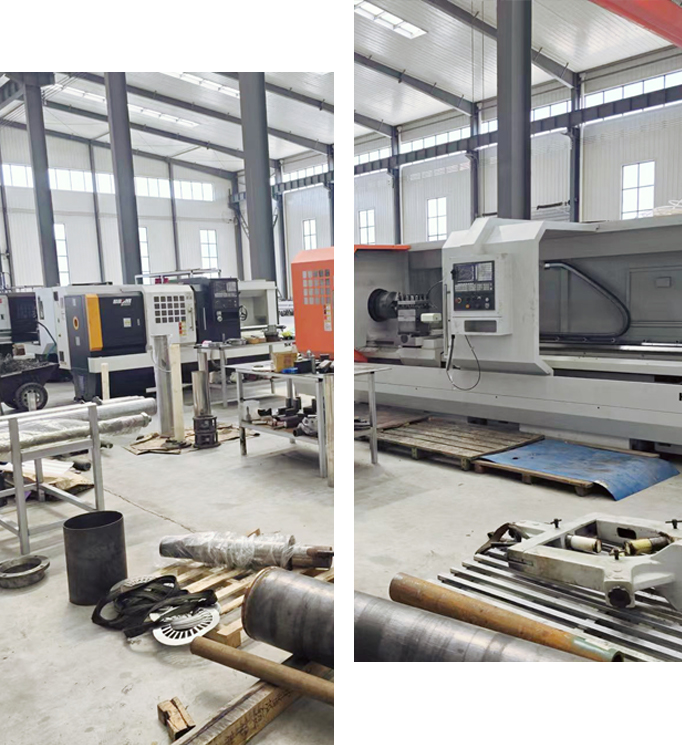Aug . 19, 2024 16:36 Back to list
Comparing the Advantages of Oil-Filled vs Water-Filled Submersible Pumps for Your Needs
Which is Better Oil-Filled or Water-Filled Submersible Pumps?
When it comes to choosing a submersible pump, one of the critical decisions involves selecting between oil-filled and water-filled options. Both types of pumps have distinct advantages and disadvantages, making it imperative for users to understand their specific applications and needs to make an informed choice. This article aims to explore the differences between oil-filled and water-filled submersible pumps, helping you determine which option might be better for your situation.
Understanding Submersible Pumps
Submersible pumps are designed to operate while submerged in fluid. They are commonly used for applications such as drainage, sewage disposal, and irrigation. What sets oil-filled and water-filled submersible pumps apart is the type of liquid used for cooling and lubrication within the motor.
Oil-Filled Submersible Pumps
Oil-filled pumps utilize oil as a cooling and lubricating medium for their motors. These pumps are generally encased in a protective housing filled with oil, which serves multiple purposes. First and foremost, the oil provides excellent lubrication for the moving components, reducing wear and extending the life of the pump. Additionally, the oil helps to dissipate heat generated during pump operation, which is particularly advantageous in high-performance scenarios.
One of the main benefits of oil-filled pumps is their durability and reliability. They can typically handle a wide range of operating conditions, including high temperatures and varying fluid characteristics. Moreover, oil-filled pumps are often more efficient at transferring energy, leading to better performance in demanding applications. However, it is essential to consider that oil-filled pumps may require more maintenance, as the oil needs to be checked and replaced periodically to ensure optimal performance.
which is better oil filled or water filled submersible pump

Water-Filled Submersible Pumps
On the other hand, water-filled submersible pumps rely on water for cooling and lubrication. These pumps tend to be simpler in design and often have fewer components compared to their oil-filled counterparts. Because they use water, they are generally easier to maintain, and there is no need for oil changes.
Water-filled pumps are usually preferred for applications involving clean water, such as in residential settings for draining basements or fountains. They are an excellent choice for tasks with lower flow rates and pressures. However, they may not perform as efficiently in high-temperature environments or with more viscous fluids. Additionally, water-filled pumps are generally less durable than oil-filled ones, as they may not withstand harsh conditions or corrosive substances as effectively.
Making the Right Choice
When deciding between oil-filled and water-filled submersible pumps, consider the specific applications you have in mind. If you're working with dirty, corrosive, or high-temperature fluids, an oil-filled pump may be a better choice due to its durability and robustness. Conversely, if your application involves clean water and lower demands, a water-filled pump could be more suitable due to its ease of maintenance and lower initial cost.
It’s also essential to consider the long-term operational costs. While oil-filled pumps may have a higher upfront cost, their longevity and efficiency can lead to savings over time. On the other hand, water-filled pumps may be cheaper initially but could incur higher maintenance costs if they fail prematurely.
In conclusion, both oil-filled and water-filled submersible pumps have their advantages and limitations. By assessing your specific needs, environmental conditions, and maintenance capabilities, you can make an informed decision that will ensure optimal performance and longevity for your submersible pumping application.
-
Submersible Water Pump: The Efficient 'Power Pioneer' of the Underwater World
NewsJul.01,2025
-
Submersible Pond Pump: The Hidden Guardian of Water Landscape Ecology
NewsJul.01,2025
-
Stainless Well Pump: A Reliable and Durable Pumping Main Force
NewsJul.01,2025
-
Stainless Steel Submersible Pump: An Efficient and Versatile Tool for Underwater Operations
NewsJul.01,2025
-
Deep Well Submersible Pump: An Efficient 'Sucker' of Groundwater Sources
NewsJul.01,2025
-
Deep Water Well Pump: An Efficient 'Sucker' of Groundwater Sources
NewsJul.01,2025
-
 Submersible Water Pump: The Efficient 'Power Pioneer' of the Underwater WorldIn the field of hydraulic equipment, the Submersible Water Pump has become the core equipment for underwater operations and water resource transportation due to its unique design and excellent performance.Detail
Submersible Water Pump: The Efficient 'Power Pioneer' of the Underwater WorldIn the field of hydraulic equipment, the Submersible Water Pump has become the core equipment for underwater operations and water resource transportation due to its unique design and excellent performance.Detail -
 Submersible Pond Pump: The Hidden Guardian of Water Landscape EcologyIn courtyard landscapes, ecological ponds, and even small-scale water conservancy projects, there is a silent yet indispensable equipment - the Submersible Pond Pump.Detail
Submersible Pond Pump: The Hidden Guardian of Water Landscape EcologyIn courtyard landscapes, ecological ponds, and even small-scale water conservancy projects, there is a silent yet indispensable equipment - the Submersible Pond Pump.Detail -
 Stainless Well Pump: A Reliable and Durable Pumping Main ForceIn the field of water resource transportation, Stainless Well Pump has become the core equipment for various pumping scenarios with its excellent performance and reliable quality.Detail
Stainless Well Pump: A Reliable and Durable Pumping Main ForceIn the field of water resource transportation, Stainless Well Pump has become the core equipment for various pumping scenarios with its excellent performance and reliable quality.Detail
